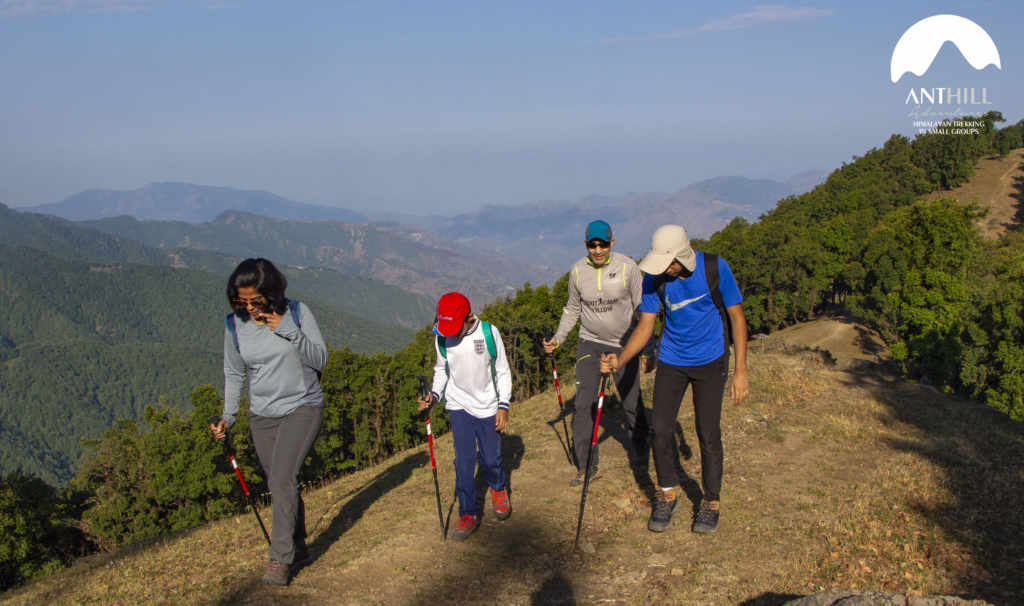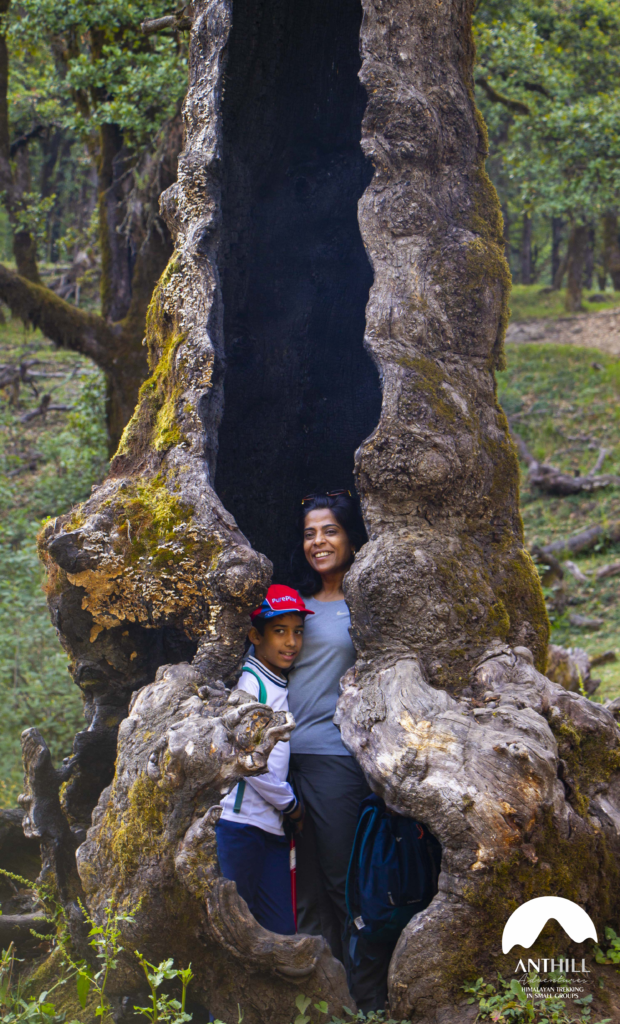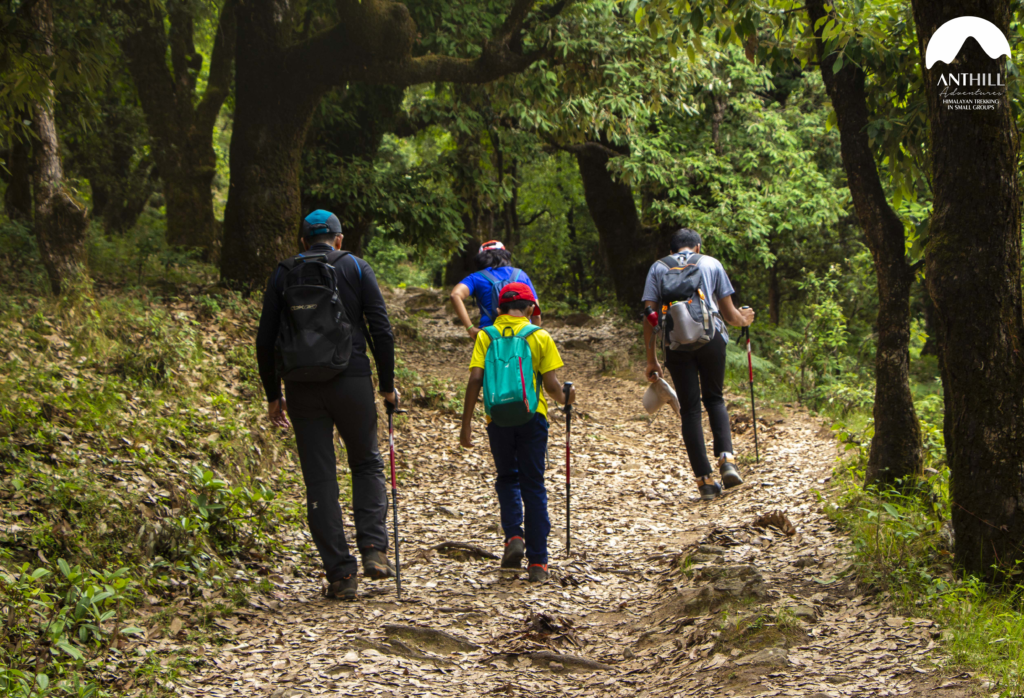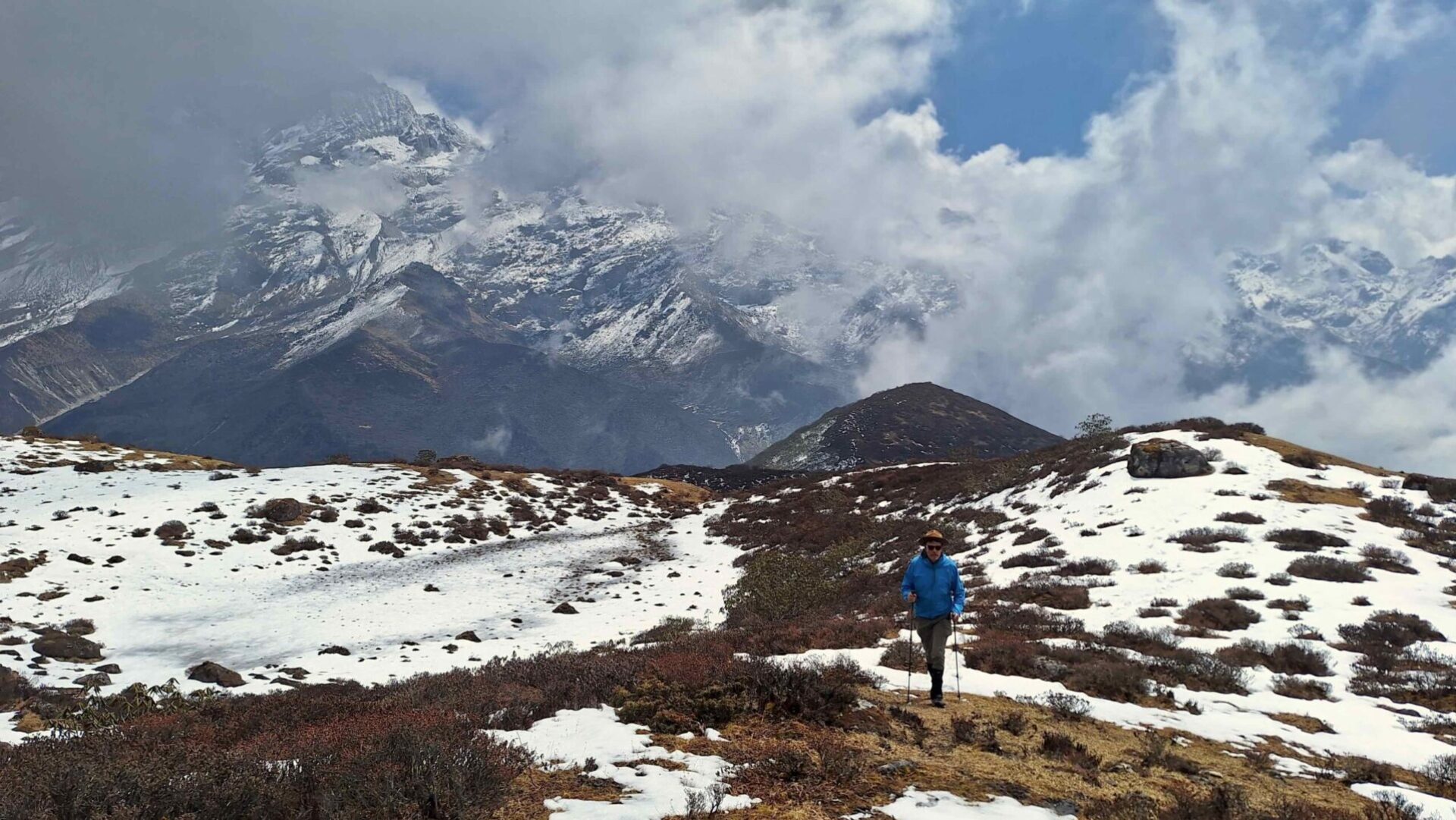
Shalini on her very first trek to Nag Tibba
As a corporate professional and someone who’s lived all her life in the very urbane milieu of cities like Delhi and New York, the idea of trekking was as far out of my comfort zone as can be. Even though I’ve always been an outdoors person who enjoys a good run out in the open, the idea of drifting away into the wilderness, for a couple of nights – no less, never resonated with me until recently. Two things have held me back from going on treks – there’s no shower and there’s no bed. For me, a day that involves five to six hours of walking has to end with a long shower and a thick mattress. This recent trek to Nag Tibba couldn’t be more removed that idea, and yet I found it oddly liberating. Here’s how my outlook toward trekking changed, slowly but surely:
My perception began to change gradually as I saw a deep inclination toward trekking taking root within my family, with my husband revisiting his old, almost forgotten, love for treks and my older son too savouring the experience. My first brush with trekking happened last November, on a trip to Palampur in Himachal Pradesh.
We were staying at a homestay run by Anthill Adventures co-founder, Vivasvat Chauhan, and given his passion for treks, he was happy to organise a short six-hour trek for us. I found the experience to be immensely therapeutic and also saw this as an incomparable opportunity to bond with my kids. Both my sons have a penchant for outdoor activities and adventure, so a normal vacation with sight-seeing and other touristy stuff just doesn’t cut it for them.

That’s how, I finally decided to overcome my inhibitions and went on a three-day trek to Nag Tibba – the highest peak in the lower Himalayan region of Uttarakhand with an altitude of approximately 10,000 feet – with Anthill Adventures, this time led by their other co-founder, Aman Sood.

The experience of being out in nature, not for a few hours or a day, but for three days at a stretch was nothing like anything I had experienced before. I’ve come back from my little adventure with a cleaner soul. Here’s why:
• I connected with myself: I spent hours staring out of the tent, looking at the star-filled sky before going to sleep. Lost in my thoughts with the chirping crickets for company. It was beautiful.
• I connected with nature: One evening, while at camp on our trek to Nag Tibba, about 150 goats passed within inches of where I was sitting, I was in their world, and they accepted me as one of them. Not one of them stopped or changed its course. They walked the path like they must walk every day. In the night, one of the cows from a ‘channi’ (summer settlement of villagers near grazing grounds) close by would come and hang out right outside my tent. I could hear its bells tingling for hours. It didn’t disturb us and we didn’t say anything to it.
• I connected with my family: Endless hours of mindless card games, long hours of trekking, pulling along the slowest member so that they don’t fall behind. Fighting over the last bite of that Snickers bar. We’ve not had a better vacation in a long, long time.

None of this would have happened without our very patient and utterly adorable trek leader Aman. He worked behind the scenes and made the experience perfect for us first-timers. The attention to detail that comes from keeping the trekking groups small is what sets them apart, and makes a world of a difference in the experiences trekkers’ come back with.

Given a choice, I would love to be able to shower every day and sleep on a bed but it’s a small trade-off for the utter calmness that envelops you when you are out there. It has been days since we came back and my head is still in the hills of Nag Tibba. Someone had once said to me that once you go on a trek, you will always want to return for more. Having experienced it first hand, I’d say I couldn’t agree more. We are already talking to our friends and trying to build a network of trek buddies for our next one.



One thought on “Nag Tibba Trek: I Shed My Inhibitions and Found a New Love”
Comments are closed.